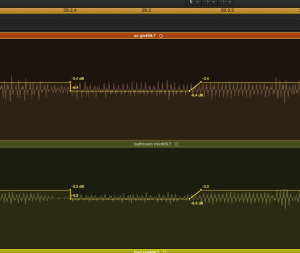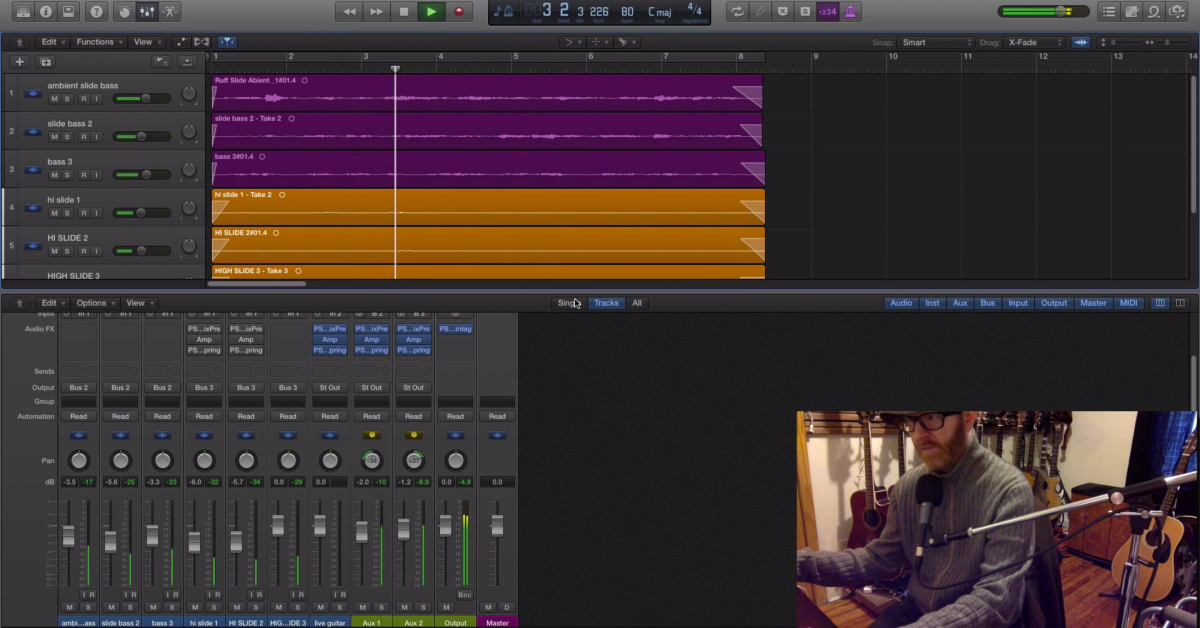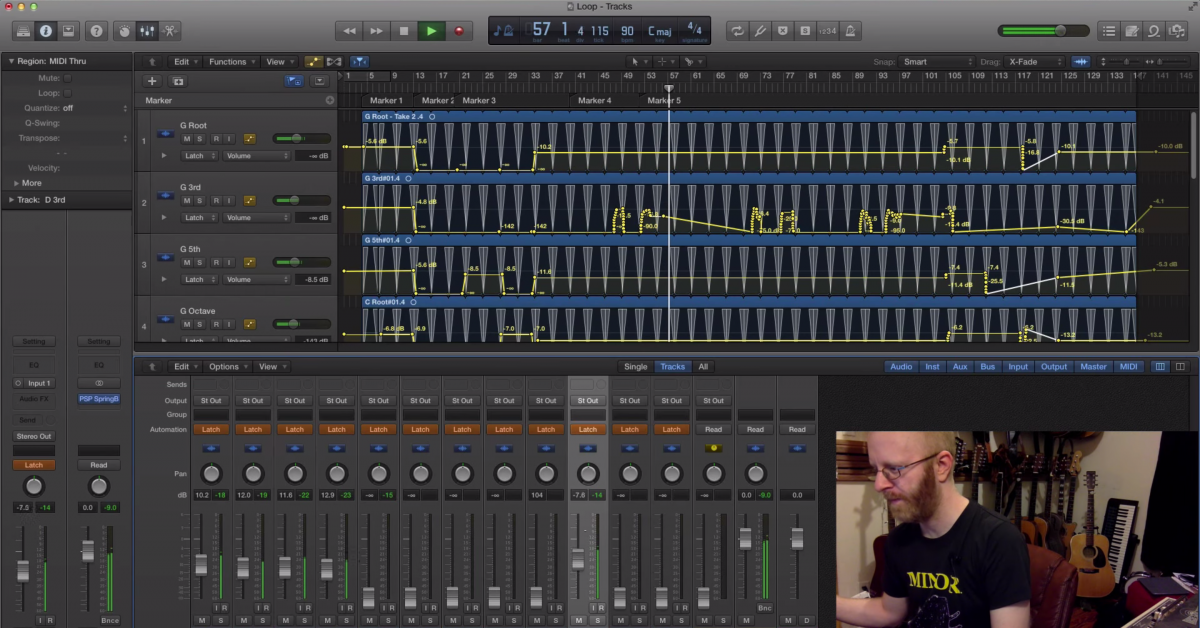Tips for Automating Guitar String Noise
Article Content
Sometimes when recording guitars you have to deal with string noise. Obviously, you do your best to place the mic where the squeak is less audible. But, sometimes no matter what you do, there is too much squawk.
There are some factors that amplify string noise.
- String type: Different combinations of metal react more to hand movement over the strings.
- String age: New strings are more likely to be noisy. Older strings become more dull, which can be helpful.
- Playing volume: The velocity you play affects the string noise to guitar noise ratio. If you have a guitarist that is playing quietly and moving around the fretboard a lot, you’ll notice a lot of string noise.
Sometimes playing quiet is a requirement for the performance. Asking the player to use more muscle might change the emotion of the song. For this reason, we must find technical workarounds.
Two
On a recent session for artist Abby Ahmad we were tracking a song called “Two.” It was a delicately played song. It was to feature just guitar, voice and a foot stomp.
We ended up trying a few guitars for the session. We thought a Martin HD35 was going to work for the song. When miked up, it wasn’t happening. It was too mushy.
The song required a tighter sound. I wanted to hear the attack of the note more clearly. Moving the mic around was not making the difference. This meant we needed to try a few different guitars.
We eventually settled on a vintage 1969 Gibson Hummingbird. This guitar was warm, but with a more pronounced attack.
Seems perfect, right? Well, because of the new strings and type of strings, we were getting quite a bit of squawk. I placed the mic in a position to reject as much noise as I could and still get the desired tone.
The string noise was still there and more than I preferred. I really wanted to use the Hummingbird. Even though the string noise was more pronounced, the tone was better. You have to pick your battles … <I know, I’m punny>
Howard the Duck
A somewhat time consuming but effective workaround is automating the string noise. You don’t want to completely get rid of it. This would sound very unnatural. Instead, we just want to tame it a bit. We’re not going completely Stepford Wives here.
The time it takes to complete this task varies on the track and how much movement is involved. You most likely won’t have to automate every single squeak.
Let’s take a listen to an example of automated string noise on the song “Two.”
Ex. 1: No Automation
Ex. 2: 5 dB of Automation
How far you can duck down the noise depends on how sparse the music is.
Node
Logic has a nice feature with the Marquee Tool that creates four nodes with a selection and click. This makes it pretty easy to drop string noise down a bit. Sometimes a dB or two will do it. Other times you may need to make more extreme dips.
How to do it in Logic:
Turn on automation for the guitar track. Use the Marquee Tool to select the string noise. Now, use the Pointer Tool to grab the line and move it down. You’ll see four nodes created. Quick and easy.
Butternut Squash Soup
Automation comes in handy when you really want to compress a guitar. Sometimes, I like to use the UAD 1176 on acoustic guitar. This can be a bit of an aggressive compressor. It will exaggerate string noise. In this case it will be even more likely that you’ll want to automate that noise.
Tip: To help with automating string noise, place an aggressive compressor on the track for editing only. This will magnify the squeak. After you’ve made your changes, take the compressor off. This way, when you apply compression on the bus it won’t grab those squawks unexpectedly.
Sidenote: I sometimes automate breaths on vocal tracks so the compressor doesn’t grab them so hard. I rarely delete them as it sounds unnatural to my ears. Usually, just a dB or two down to not pop out so much.
It’s subtle, but it helps the song. The squeaks don’t grab your attention. We hear more of the tone of the guitar. This is helpful in a song that is minimal in production.
In Reverse
Who says we always have to get rid of noise? Sometimes it’s cool to highlight noise.
I find this to be the case with electric guitars. I had two experiences with this recently. I was recording with RCA artists Peking Duk.
They really liked the sound of the pick hitting the string. They preferred I muted the string by placing the pick against the string as opposed to muting with my palm or fretting hand. The pick mute made a percussive noise.
One could place a compressor on the track to even out the volume of the plucked and pick muted notes (essentially bringing up the percussive mute). But, what if you don’t want to squash the guitar? What if you want to keep the dynamic sound of the track?
The answer is automating the noise. Grab those little blips and bring them up. I always draw this automation in as it requires tiny adjustments.
Train is A-Comin’
On another session this month I was tracking with Anthony Resta in LA. I was laying in a solo for the new Gary Douglas Band record.
As we got to the solo, I switched to a different pickup. We had a fair amount of gain on the guitar. This exaggerated any movement on the guitar. Switching the pickup made a really cool noise.
We ended up adding that to every take. Within the context of a full mix, this little blip could get buried. With some automation, our noise came come out front and gave the listener a clue that all hell is about to break loose.
As you can see automation is a great tool for reducing or exaggerating noise. Give this a shot in your next session.






